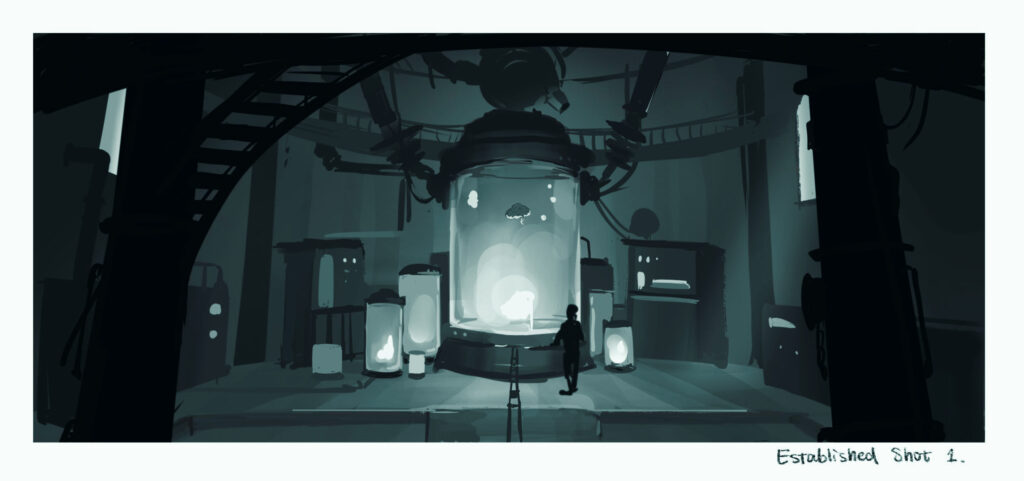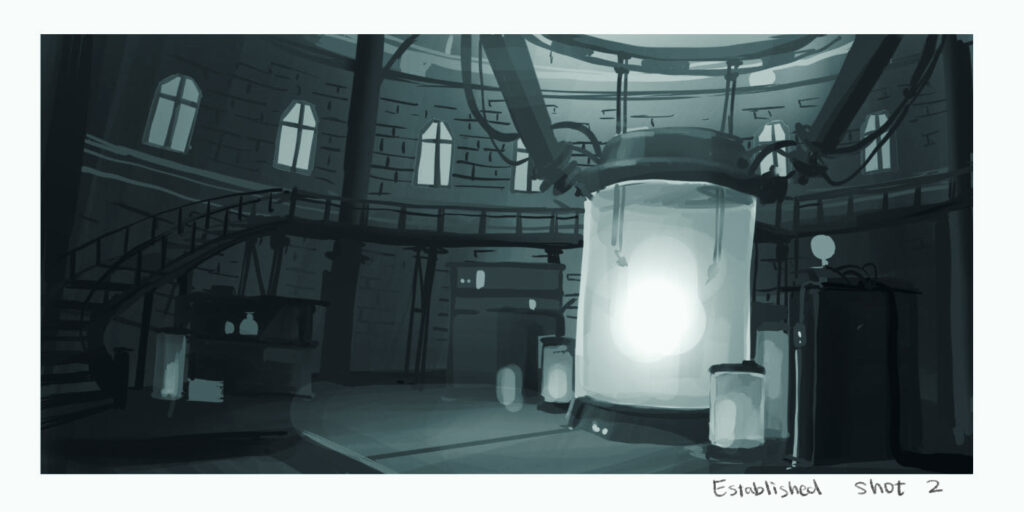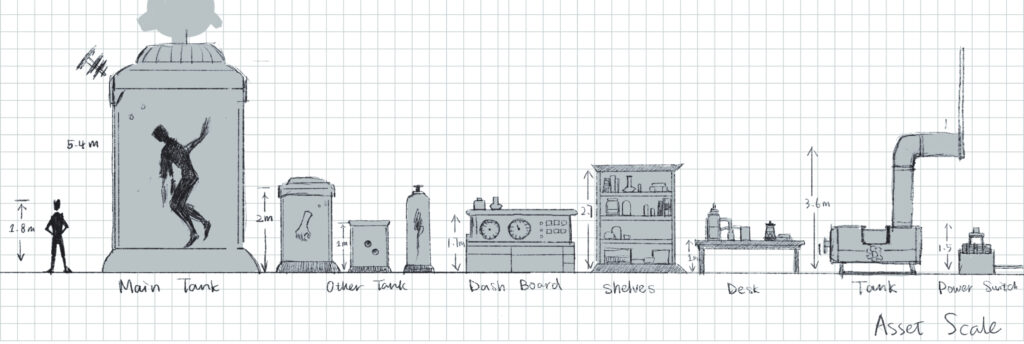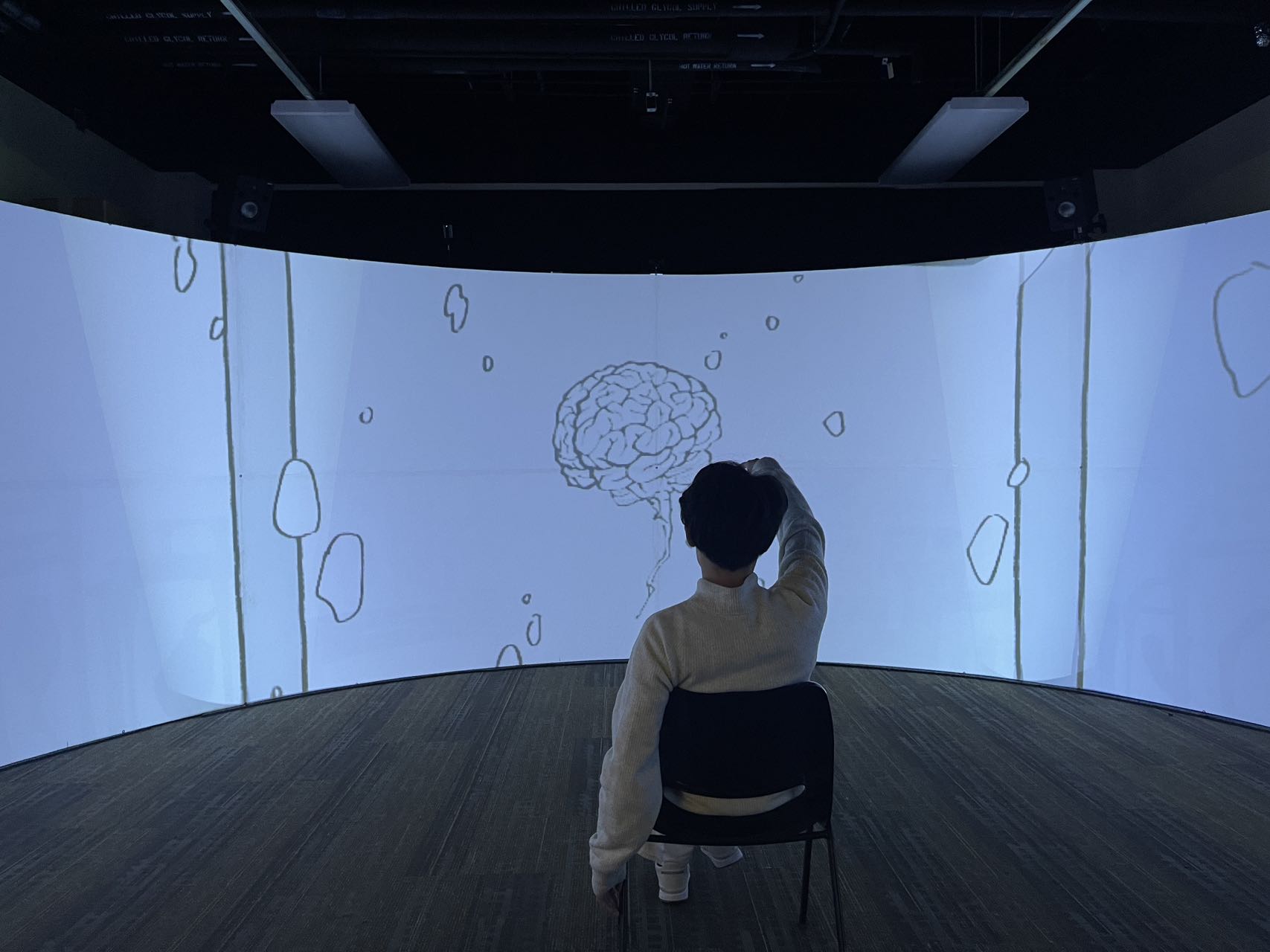
DESIGN AROUND TECH
With the scope and task list firmly in place, the team is poised to dive into production. It’s truly gratifying to witness each team member taking the initiative, actively engaging in their assigned tasks, and propelling the progress bar forward across various tasks.
Kicking off with the narrative, our narrative designer has taken charge, refining and optimizing the storyline under the guidance of our instructors. Simultaneously, our sound designers are busy curating our sound library, sourcing sound effects and reference background music. They’re also experimenting with AI speech generators to test out narratives before involving our voice actors.
Shifting gears to the environment, our talented environment artist is crafting the overall design using the references we’ve gathered, while other team members are strategically placing greyboxes as initial blockouts. Concurrently, our storyboarders are diligently working on creating storyboards that align seamlessly with the narrative and environment design.

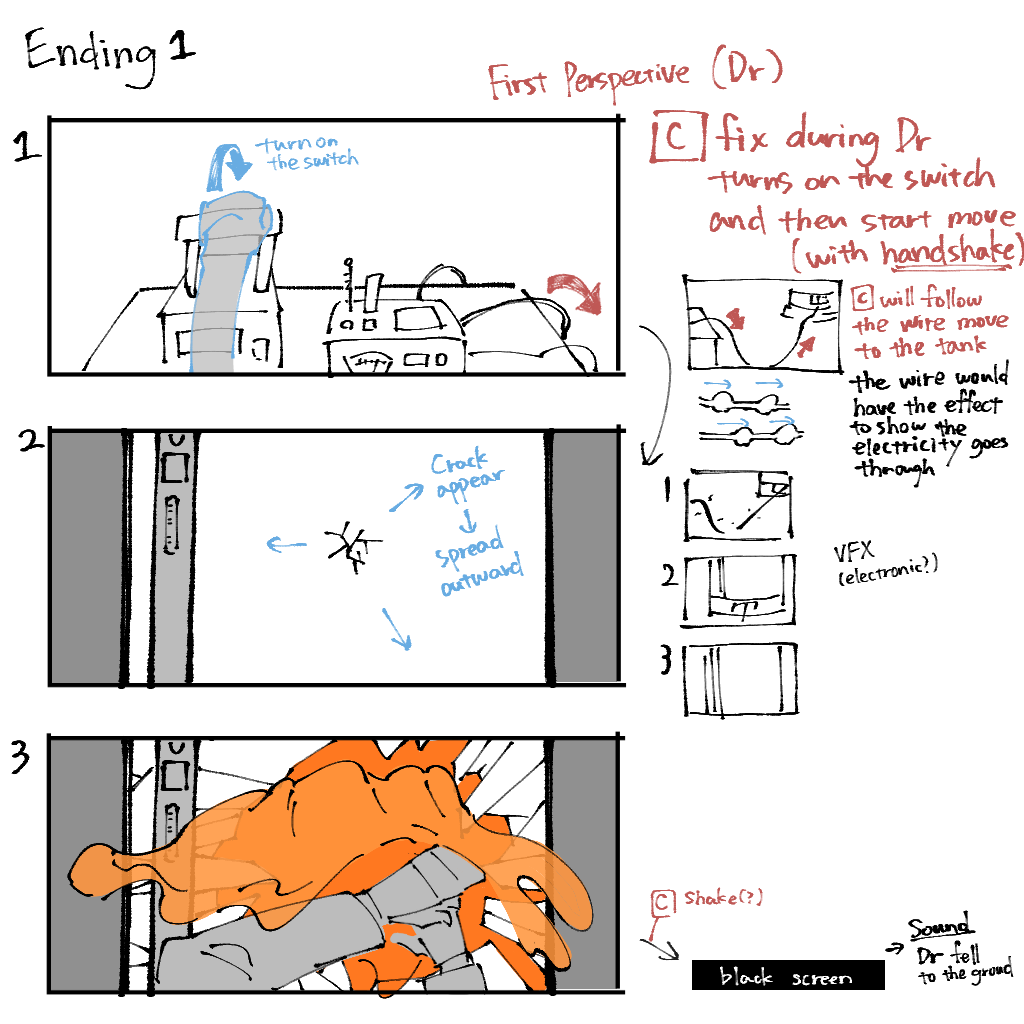
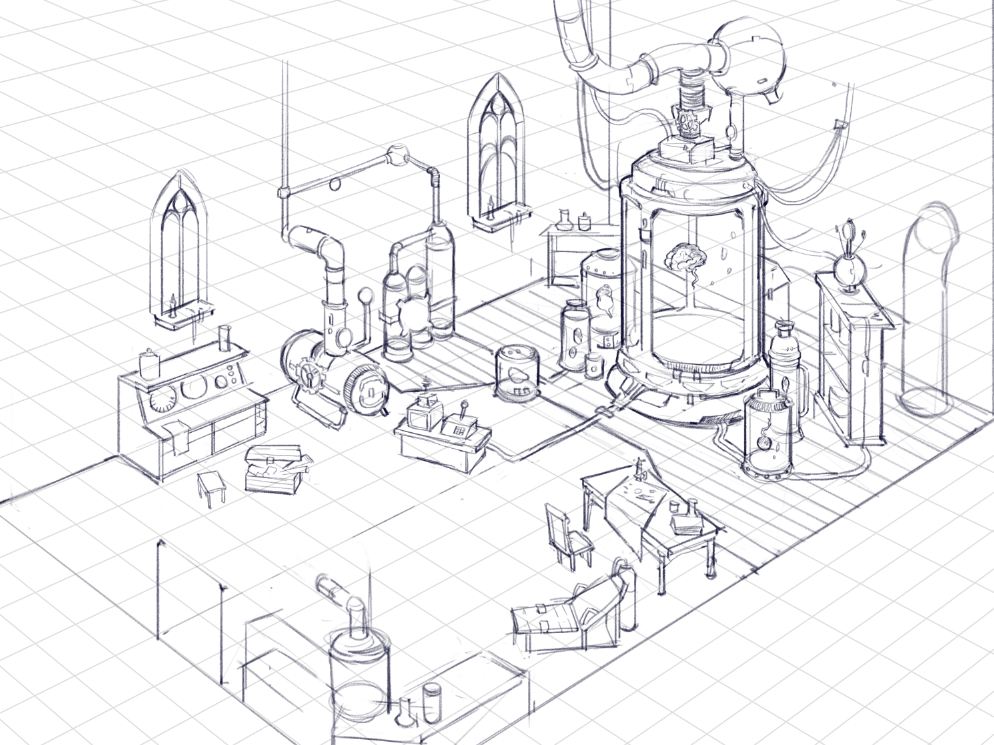
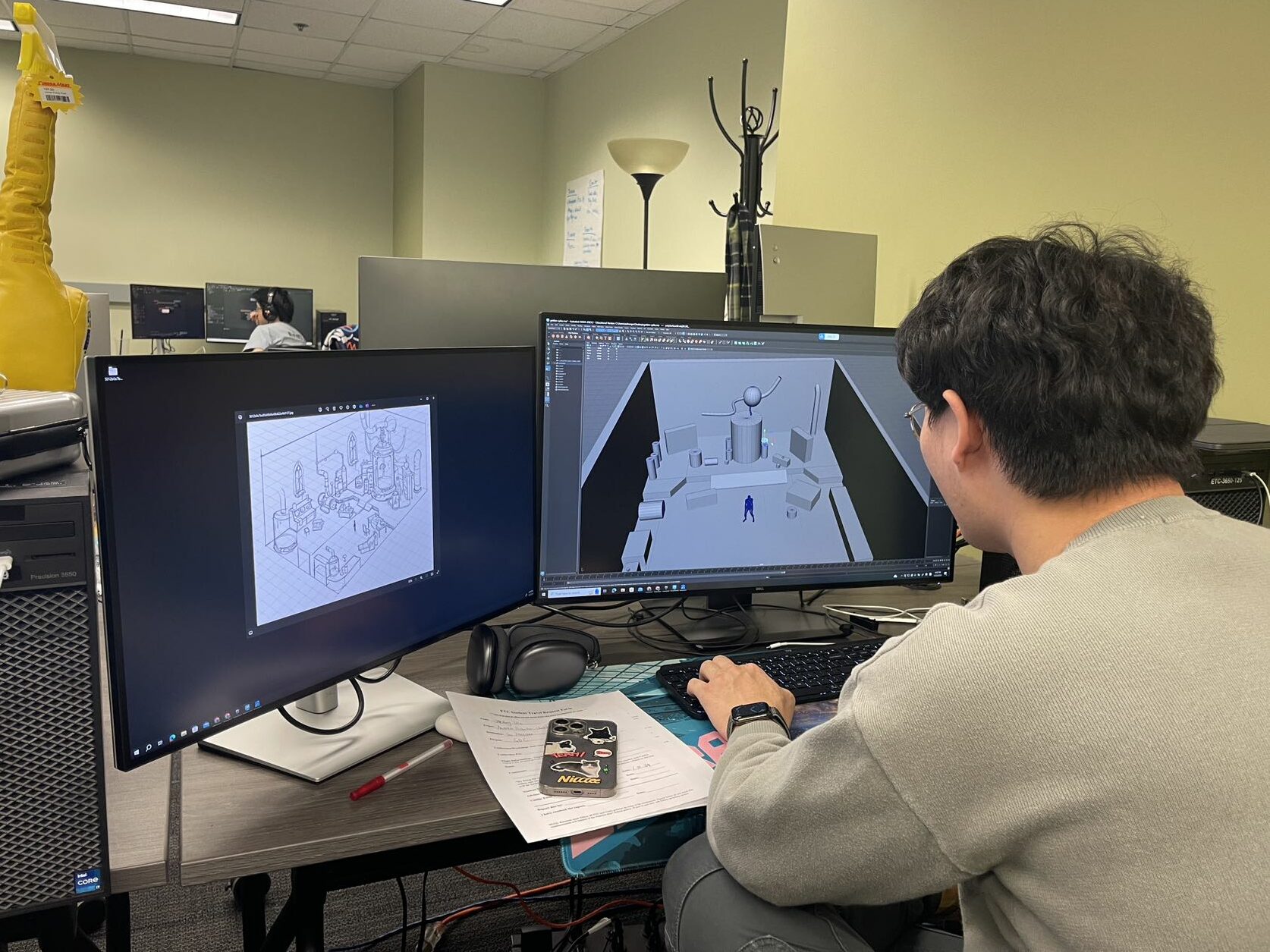
Despite smooth progress according to the initial plan, a crucial aspect, brought to our attention by the instructor, had been overlooked throughout our efforts: the hardware for our final deliverable. Unlike traditional animation, our end product will be a 3D animation showcased in a Cavern, where viewers will experience a panoramic display with 3D stereo glasses. This means our approach to designing camera movements and environmental spaces must evolve from conventional methods.
This shift has redirected our design approach, presenting both challenges and an exciting creative journey. It goes beyond animating; now, we’re crafting around the technology we’re utilizing, transforming it into an immersive storytelling experience. For instance, enhancing scene depth becomes crucial for an impactful effect with 3D stereo glasses. Given the panoramic screen ratio, we’re restricting horizontal camera movements and leveraging lighting dynamics to direct the audience’s focus horizontally.



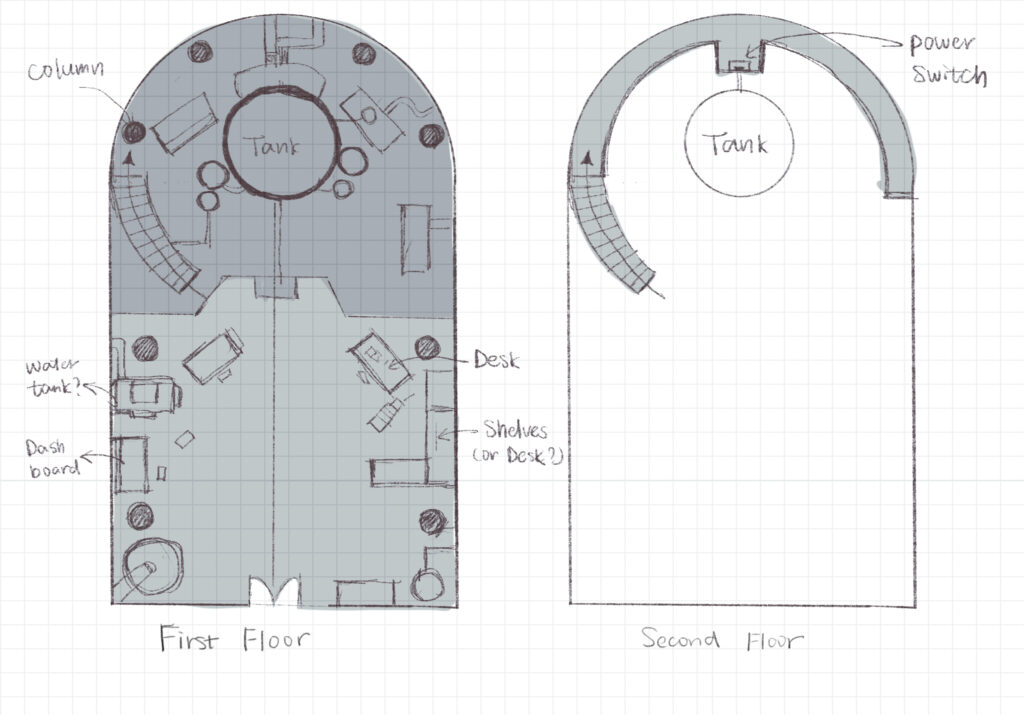
In line with the updated design direction, the narrative designer worked closely with the storyboarder to create a fresh iteration. Simultaneously, the environment artist developed a revised floor plan along with updated concept art. These new iterations strictly adhered to the panoramic screen ratio for testing purposes, enabling us to skillfully compose assets within the environment and refine our approach to camera angles.
